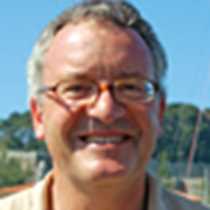Dartmouth
May Day saw us arrive in Dartmouth to join the National Geographic Explorer to begin our exploration of the remoter western coast of the British and Irish Isles. We had met mid morning at Totnes to board a river boat to cruise down the River Dart to the protected harbour of Dartmouth on the Devon coast. Devon has a preeminent place in British naval history, supplying sea farers continuously from mediaeval to modern times.
Dominating the attractive harbour, on the Dartmouth side on the western bank of the Dart, is the Royal Naval College, built at the end of the nineteenth century as the premier officer training centre for the Royal Navy. It overlooks a colorful harbour that has seen service from the time of the Spanish Armada to the D-Day landings and where, from Bayard’s Cove, the Pilgrim Fathers started on their voyage to the New World in search of religious freedom. We lunched in style overlooking the river and were delighted to watch the National Geographic Explorer sail by and execute a dramatic turn in the river before mooring midstream.
After lunch we were guided around the town on foot by enthusiastic local guides who showed us the fine mediaeval buildings, including those of the Butter Walk and the Shambles, the latter where the butchers’ shops were situated in former times. We had been greeted by the town crier and, beside the band stand, Morris dancers were performing, an old English tradition of uncertain origin. Our tour included a visit to St Saviour’s Church, with its magnificent rood screen - a rare urban survival from Reformation times – its Tudor pulpit and memorial brasses. The walk concluded at Bayard’s Cove and the adjoining castle, built to defend the inner harbour in the reign of Henry VIII.
An early evening departure afforded an opportunity to view the narrow harbour entrance, protected by Dartmouth Castle. Beside the castle, another church, dedicated to St Petrox. Petrox is a Celtic saint whose cult was centered in Cornwall where a shrine survives to his memory at Bodmin where his mortal remains are reputedly located. Petrox was active in Cornwall, Wales and Brittany in the sixth century and this dedication on the west bank of the Dart is the easternmost limit of his territory. His church was founded a generation before the conversion of the English to Christianity at Canterbury in 597AD and sailing past it and turning westward as the pilot disembarked was a good marker for our voyage into the Celtic realms.



